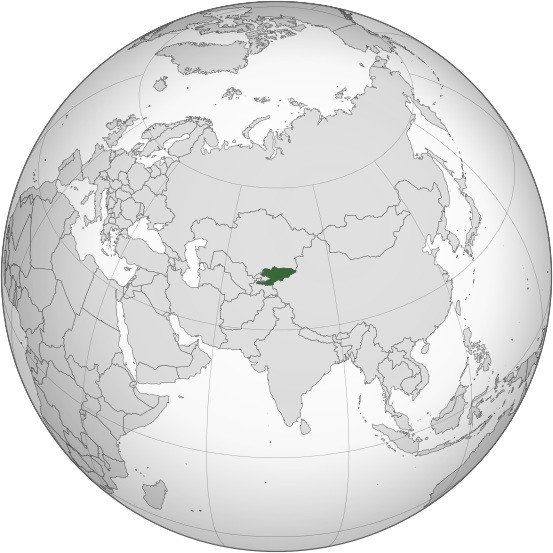BISHKEK (TCA) — Kyrgyzstan has simplified the conditions for obtaining work permits for foreign citizens. Earlier, six documents were required to obtain such permits, while only two documents are needed now, Medetbek Aydaraliev, Chairman of the State Migration Service of Kyrgyzstan, said at a press conference in Bishkek.
In addition, the period for considering applications for work permits for foreigners has been reduced from one month to ten working days. As a result, bureaucratic barriers companies have often complained about have been reduced.
The State Migration Service (SMS) has also begun accepting documents electronically, thus fulfilling the Government’s Taza Koom (Clean Society) program.
This work has been intensified after Kyrgyzstan’s Prime Minister Sapar Isakov criticized the SMS for delaying the process of issuing work permits. The Government received many complaints from foreign citizens, including investors, entrepreneurs, employees, and university teachers. The process of issuing permits was opaque, slow and uncomfortable, they said.
“We attract investors and good teachers to universities but state bodies do not allow them to develop due to the process of issuing permits,” Isakov said.
“The Government should create the most convenient process for applying for a work permit. Our legislation should be attractive for investors, so that large enterprises, businesses could open,” the Prime Minister said.
He ordered to simplify the procedure for issuing work permits for investors in a week’s time, as well as to shorten the list of documents and consider the possibility of extending the work permit for foreigners to three years if they have an appropriate confirmation of the duration of the contract or long-term investment plans.
Isakov also ordered to develop clear criteria for a motivated refusal to issue a work permit.
Russian FMS blacklist shortened
The SMS Chairman Aidaraliev also told the press conference that every year, the number of Kyrgyz citizens on the blacklist of the Federal Migration Service of Russia is declining. The FMS blacklist is a list of foreigners who violated the current migration legislation of Russia and were banned from entering the Russian Federation.
As of January 1, 2018, about 77 thousand Kyrgyz citizens were blacklisted, while there were 110 thousand on January 1, 2017, and 180 thousand in 2015.
According to official data, 640 thousand Kyrgyz citizens are now working in Russia, which is 88% of the total number of Kyrgyz migrants.
The State Migration Service of Kyrgyzstan proposed not to blacklist those Kyrgyz citizens who violated the rules once, and to blacklist them after three violations. Negotiations on this issue will continue in the near future in Moscow within the framework of the Eurasian Economic Union.
EEU benefits
Supporters of Kyrgyzstan’s accession to the EEU say that Kyrgyzstan’s main benefit from the accession was the facilitation of the working conditions of migrants in comparison with those from Uzbekistan and Tajikistan (countries that are not EEU members).
The migration statistics show that due to the economic crisis in Russia and the tightening of migration laws, the number of migrants from Uzbekistan and Tajikistan declined by 15-20% from 2013 to 2016, and some growth began in 2017.
At the same time, the number of migrants from Kyrgyzstan began to grow since 2015, when the country entered the EEU, and now it has exceeded the pre-crisis level by 10%. This is a significant growth rate, despite the fact that the crisis still affects the Russian economy.
The fact that people from Central Asia are leaving for Russia means that there are favorable conditions for them to find jobs and earn money there.
Some migrants take root in Russia and remain there, while others, having earned the necessary money (for example, for housing construction) return to their homeland.
Migration from Kyrgyzstan is often a family one. Many Kyrgyz children study in Russian schools. Having received Russian citizenship, some migrants stay in Russia. A considerable number of labor migrants continue to live between the two states, returning to their homeland and then again leaving for work. This will happen until Kyrgyzstan develops its economy and creates jobs with decent wages.
Labor migrants’ remittances
Mass outflows of the labor force and the financial inflows profoundly altered the domestic economy, bringing strong short-term benefits, as well as problems.
The scale of out-migration from Kyrgyzstan is enormous and equivalent of 3.3% of the total population in the country, or 10% of the working-age population.
Kyrgyzstan is among the countries that are most dependent on money transfers. In 2017, remittances from Kyrgyz labor migrants exceeded $2.48 billion, which is equivalent to almost a third of the country’s GDP and manifold higher than FDI inflows. More than 90% of remittances were from Russia.
According to a study, about 75% of Kyrgyzstan’s migrants are men aged 18-35, and most of them have a complete secondary and even higher education. Most of them were unemployed before departure, engaged in agriculture or worked in the services sector in cities.
The main motivation for migration was the search for income to meet daily needs. In the surveys, most migrants indicated that they left their homeland because their families needed money or because of a lack of job opportunities in the home country.
The motivation to make savings/investments was less significant and was mainly focused on family events and buying real estate. The remittances were mainly used for food and housing, and only 8% of respondents spent their money for children’s education and 3% for business investment.









